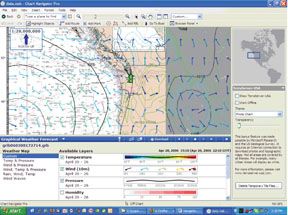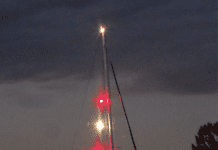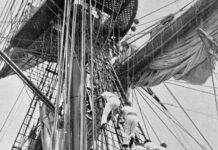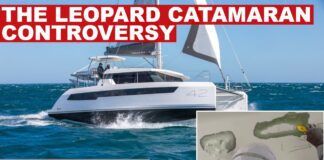Its been nearly five years since Practical Sailor took an in-depth look at PC navigation software, and its high time that we revisited the subject. The most notable change since our last test has been NOAAs recent release of a full set of vector charts that can be downloaded for free from the NOAA website, which greatly enhances the value of the programs that work with these charts. For this review, as in the previous one, our evaluation focused on real-time nautical navigation software aimed at U.S. recreational boaters.
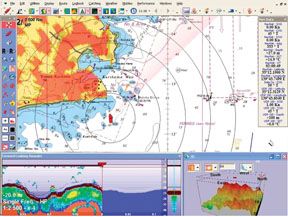
288
Real-time navigation software accepts data from sensors and can send control information to an autopilot. This distinguishes it from route planning software, which is often free or very inexpensive. Manufacturers of most of the premium real-time navigation software products reviewed in this article also provide their own inexpensive route planning software.
Marine navigation software is increasingly being integrated with sensors and other navigation electronics, such as chartplotters, radar, and Automatic Identification Systems (AIS) receivers. This trend is most pronounced among high-end software products that often require equipment from a specific hardware maker to deliver their full potential. For example, Nobeltec-originally just a software vendor-now distributes hardware, and hardware-maker Furuno is closely aligned with MaxSea. Raymarines Raytech software is normally matched up with Raymarine electronics. (Although Raytech was not included in this test group, PS published a review of Raytech Navigation Suite Version 5.0 in the May 2005 issue, and an update on the current Version 6.0 will appear in a future issue.)
Compatibility with existing electronics is key when shopping for nav software. All of the software in this test advertise compliance with the voluntary industry standard NMEA 0183 (some also meet the new NMEA 2000 standard), which lets various devices communicate with each other. However, each of the major marine GPS and chartplotter manufacturers also supports its own protocol for transferring waypoint, route, and track information. (The GPX file format described on page 22, “The Beauty of GPX Format,” specifies the format for this information, not how it is transferred.) If you want to maximize integration with a particular GPS or chartplotter, youll want software that supports its proprietary protocol. Our value guide on page 22 shows the GPS manufacturers for which each software vendor supports route and waypoint transfer, but this chart is only a general guide and the level of support can very greatly. You will want to check with the software vendor to see whether the software you intend to buy will support all the critical data from your specific model of GPS-not just the brand.
In terms of price, you could group the software that was tested into three groups: low-cost, mid-level, and high end. In general, cheaper products offer fewer features than more expensive products, however, there were a few surprises.
The Capn
Maptech purchased The Capn and SoftCharts (both no longer available) from SAIC in April, after this test had begun. It has since overhauled The Capn for “commercial fleet use” and discontinued SoftCharts. Capn Integra, which Maptech says is “very different” software that is not aimed at the recreational market, rolls out this month. Maptech will continue to offer support for the original Capn, but will no longer distribute it for sale. For recreational boaters looking ahead, Maptechs Chart Navigator Pro is the only product we reviewed that is capable of directly importing The old Capns routes and waypoints.
Its a good thing Maptech is revamping, because The Capn let us down. Some new features such as AIS and vector chart support are there, but The Capn was the least stable and had the worst user interface of all the products, and it does not support weather data. It is, in our opinion, outdated.
Additionally, The Capn does not support free vector charts from NOAA in S-57 format. However, it can use charts sold by Maptech and Nautical Data International (NDI) that are made by reformatting the S-57 data into a format that The Capn can read.
Bottom Line: After a long run, the popular Capn bids adieu. If youre not in love with your current version of The Capn, PS advises switching to Maptechs Navigator Pro or another, more user-friendly product that meets your needs.
Fugawi ENC
Fugawi boasts impressive features-multiple chart support, support for uploading waypoints and routes to various GPS models, AIS support, weather GRIB files-that we like. Unfortunately, it was also confusing to install, crashed a lot, had the worst tech support of all, and was, relative to Maptech and others, awkward to use.
Bottom Line: Despite our troubles, this low-priced, feature-laden program is our Budget Buy for Windows users. (Fugawi says Version 4.1 improves usability.) It will appeal to die-hard Windows users who want special features and don’t want to pay $200 more for a more stable, more user-friendly program that has better tech support.
GPS NavX/MACENC
MacENC is one of the very few marine navigation products that will support international S-57 charts encrypted with the S-63 protocol.
Bottom Line: Dont let the price fool you. GPSNavX was among the best we tested. Although, we did not test MacENC, based on our experience with GPSNavX and talks with users, we recommend it with a high degree of confidence.
Maptech Chart Navigator Pro
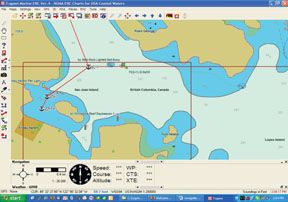
288
Route planning is very nice. Leg range bearings and leg extensions can be shown, so you know what topographical features should be straight ahead. The side panel can show route obstacles. Tidal current and weather data could not be factored into ETA in our tested version, however, an update permitting this feature was set to release this month. Waypoints and routes can only be exported to a few formats.
Rose Point Systems said it had tested its software with NMEA 2000 devices and found it compatible.
Downloading weather data is particularly easy. All available weather data is free: air pressure, air temperature, relative humidity, wave direction, wave height, wave period, and wind speed and direction.
Bottom Line: This is our Best Choice overall for Windows users. It is intuitive, easy to learn, and offers all the elements a coastal navigator would likely need.
MaxSea
Furuno and MaxSea are making a major investment in each other, and it is apparent that Furunos efforts are a positive influence on MaxSea.
MaxSea is a modular product, with each module offering specific capabilities. If you decide after you purchase the product that you want another module, youll need to update your dongle via the Internet or by manually entering an update code. Because the software is sold only through dealers, youll want a well-educated one to help sort through the features and pricing of the module packages and combos.
MaxSea offers very specialized and powerful modules for specific types of boats, including fishing vessels, large commercial freighters, and world-class racing sailboats. Many of the features provided are unmatched by any other product that we reviewed. For example, the Routing and Performance modules together can use and/or generate polar diagrams.
MaxSea does not provide downloadable upgrades; this is a key omission, in our opinion. All upgrades are shipped on CD, and dongle codes must be re-entered, which works best when Internet access is available. Minor upgrades are shipped without charge upon request; one might expect three or four free minor upgrades over a two-year period before needing to pay for a major upgrade. MaxSeas anti-piracy measures gave us problems running the software after an upgrade, and we had to call in for tech support several times to make it work.
MaxSeas optional NavNet module is clearly hungry for computing power. It made our laptop sluggish and prevented it from being able to use its power-saving features. There is no way to disable the NavNet module, even when not connected to a NavNet network.
MaxSea V12.5 does not support international S-57 charts encrypted with the S-63 protocol; however, the manufacturer said the next version (due for release this fall) will include this feature. This update will be available free to existing MaxSea Version 12.x users.
Bottom Line: Recommended, with caveats. If you own a Furuno radar and are tempted by the unique modules, consider MaxSea; otherwise, PS recommends waiting to see how successful Furuno is in making sense of the rather chaotic documentation, and whether MaxSea can improve the user interface. A full-time cruiser with patience or a professional navigator might also be able to justify the time-consuming, painful process of learning the software, and suffering through the cryptic menus and the poorly translated documentation.
Nobeltec Admiral
Installing Admiral was, in our view, exceedingly painful, mostly due to the copy protection; it took us two hours. Installation requires calling Jeppesen (U.S.) during business hours and getting an activation key. Internet activation is not possible. You are advised to leave a message; tech support returns overseas calls. A technical representative told PS that Admiral does not restore from a backup image properly, due to anti-piracy issues, though we were able to accomplish this using Casper software.
Nobeltecs device support is limited compared to others in the test. Instead of making its own devices-like Brunswick, Raymarine, and Furuno-Jeppesen Marine has private labeled devices from other manufacturers. For example, the Nobeltec radar is actually made by Koden. Nobeltec can also work with many Furuno radars via the IR2 Black Box analog-to-digital signal converter (which we did not test). Nobeltec products are “closed” in that they do not share route data easily with other software.

288
Weather data is not very well supported; even though the original data is available from NOAA at three-hour intervals, only one snapshot of weather (GRIB files) is viewable each day, and the type of information available is limited.
Admiral has no special provisions for sailing. VNS seems to be targeted toward powerboaters, and Admiral seems to be designed for large power vessels that have more than one navigation computer. Tide and current data is integrated with Admiral to some degree, but not nearly as well as it is with Maptech.
Nobeltec provides a handy means of configuring the windows displayed on each monitor. Unlike all the other products reviewed, Nobeltecs monitor configuration is restored each time the program is launched-this is typical of the Jeppesen Marines careful thought when designing its products. Unfortunately, Nobeltec appears slower than its competitors to deliver feature updates. This may explain why the product is so solid, but some key features found in other programs are missing.
Jeppesen representatives would not say whether support for S-63 and GPX might be available, or what their plans are to support a greater range of devices.
Jeppesen is in an awkward spot, in our opinion. If its features you want, MaxSea has more (albeit with a steeper learning curve). If you need clean integration with certain devices, Nobeltec can’t compete with MaxSea (Furuno) or Raytech (Raymarine). And if you don’t need network redundancy, then MacENC, Maptech Navigator Pro, or Coastal Explorer have a clear edge with better interface and other niceties.
Bottom Line: This is a solid, well-thought-out product that works well with older devices and charts; however, it is limited in the range of new devices that it can connect to when compared to others in the test.
ConclusionThere is no one right software for every user. The selection of your navigation software will be guided by the following:
Your need to support multiple computers.
The type of interface supported by your devices (NMEA 0183, NMEA 2000, Seatalk, NavNet, Simnet, etc.)
Your need for specialized functionality (racing sailboat, trawling, commercial freight, etc.)
Budget.
Time available to learn.
If you have a Macintosh computer on board, then youll be happy with MacENC. Our favorite Windows packages for pleasure boating are Chart Navigator Pro from Maptech or the Coastal Explorer from Rose Point, which are actually the same software bundled with different charts by different companies.
If budget is the primary issue, then Fugawi offers the least expensive PC product here. If you need to support multiple computers with redundancy, then Nobeltec Admiral and MaxSea are your choices. If your boat has Furuno NavNet, buy MaxSea with the NavNet module. MaxSea provides the most comprehensive feature list, but when configured with every available module ($4,400 for the Pro edition), it is by far the most expensive product.
So long as NMEA 0183 remains in common usage, proprietary networks such as those provided by Raymarines Seatalk, Fugawi/MaxSea NavNet, and Nobeltec will continue to be necessary for many boats. As NMEA 2000 gains traction over the next few years and Ethernet becomes more common for high-bandwidth transfers, PS expects that navigation software will be relieved of much of the responsibility for networking and that navigation software will be forever changed. Based on this test, PS believes Chart Navigator Pro/Coastal Explorer, and MacENC (for Macintosh users) are in the best position to adapt to the changes coming in marine navigation software.
Contacts
AIS Black Box Si-Tex, 727/576-5734, www.si-tex.com/
The Capn, 800/637-4020, www.thecapn.com/
Maptech, 978/792-1000, www.maptech.com/
Fugawi ENC, 416/920-0447, www.fugawi.com/
MacENC, GPSNavX Inc., 971/248-3065; www.gpsnavx.com/
MaxSea, 800/343-9171, www.furuno.com/
Nobeltec, 503/579-1414, www.nobeltec.com/
Rose Point Navigation Systems, www.rosepointnav.com/



































